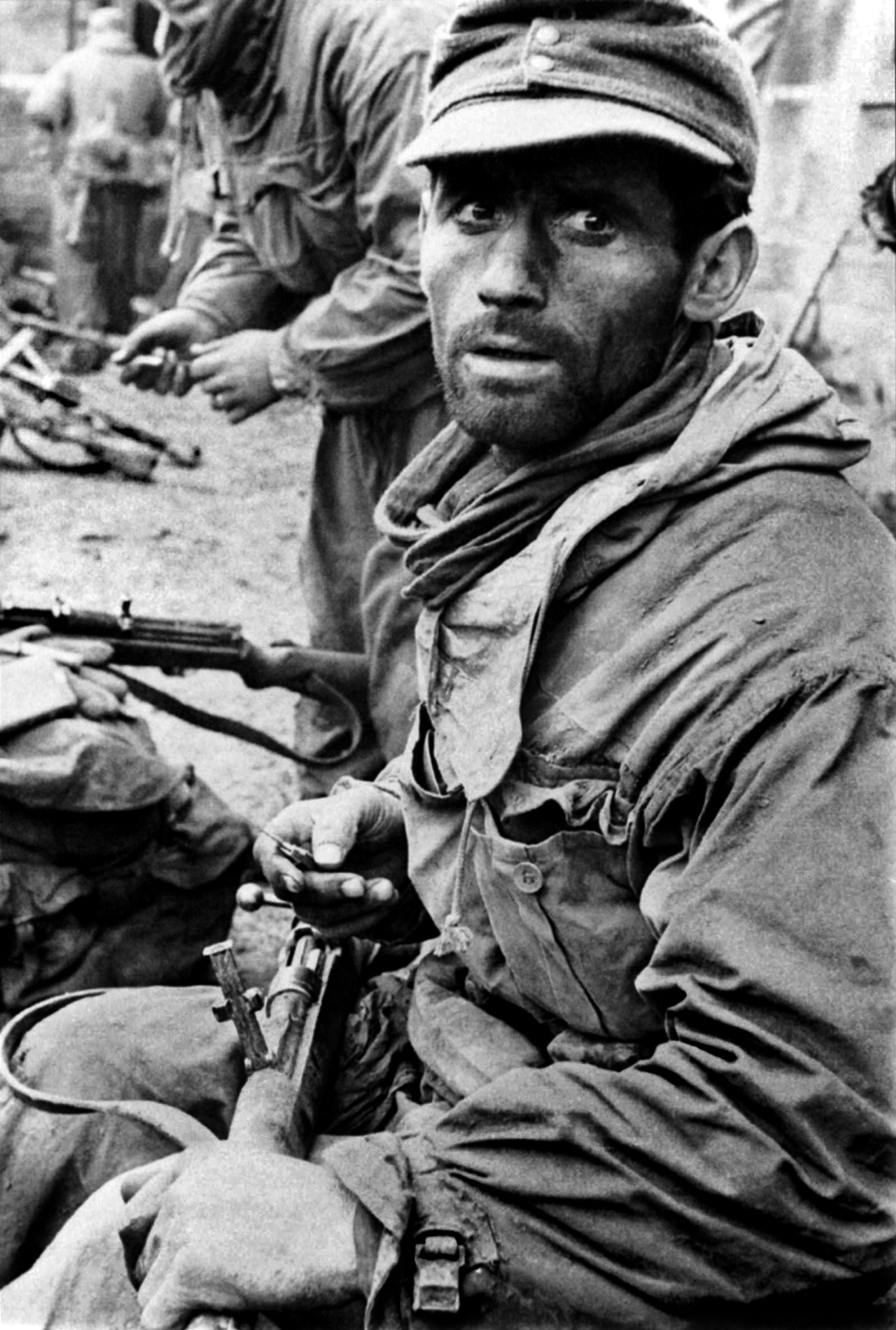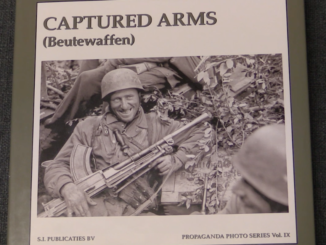Today we are taking a brief side trip in Bergmann development to look at a couple of magnificent engraved Bergmann pistols – specifically, a pair of model 1896 No.3s, a Bergmann Mars 1903, and a model 1910. One of these (the 1910) was done by an outside engraver, and the others are examples of Bergmann factory engraving work. The Bergmann style is one of very fine banknote style scrollwork with gold accents – I think it is beautiful, and really highlights the skill of the engraver.
The 1910 is an interesting piece both for its style and for the gold Arabic phrase on the side of the slide, which is an excerpt from the Hadith and translates to “Verily, strength lies in shooting”. A pretty apt martial exhortation for a pistol! Examples of several of contemporary examples with the same engraving pattern do exist in museum collections to this day, which hopefully I will be able to examine in the future.
The best of these guns, of course, is the immaculate 1896 in its presentation case. Like a true time capsule, it shows the full quality one would have received from Bergmann in the late 1890s.




Engraving gives you no tactical advantage, but makes a nice gun very precious to the beholder. At least the engravings here are genuine and not faked with stamped plates, unlike “commemorative collectibles” made from rejected parts at the factory. Said fancy commemorative guns overemphasize bling and should never be loaded with live ammunition… or am I wrong?
“Said fancy commemorative guns overemphasize bling and should never be loaded with live ammunition… or am I wrong”
Decor (excessive or not) don’t mean that weapon will not function properly.
And judging function on basis of appearance is bad idea.
Different embellishments on weapons go back to at least the late medieval and renaissance era. In the early and high middle ages just owning a sword would indicate that you had money. In the 14th century reasonable quality steel became cheaper and even the more well-off of the lower classes could often buy a reasonable quality sword. In some regions that lead to legislation banning commoners from owning swords, which in turn lead to exploitation of loopholes, for example in many German principalities the “Langes Messer” or “Long knife” was popular, which was a huge knife but technically not a sword…
But I digress; the point was that the embellishments became the way the rich and noble separated their weapons from the rest, but they were still absolutely designed and meant to be used as weapons if need be and often carried in battle as well. This tradition then carried over to firearms and particularly pistols, although muskets and hunting rifles were decorated as well. Even today you can buy high end combination guns like drillings in Germany with all kinds of decorations that are meant to be used for actual hunting. The engraved Bergmanns could have been just for show, but could have also been purchased for self defense by rich businessmen or by persons of “old money”. The turn of the century time frame allows for both scenarios.
“Different embellishments on weapons”
If you need overlook of various decorating techniques used historically, see
http://www.metmuseum.org/toah/hd/dect/hd_dect.htm
Very informative site, thank you! I just noticed that they list pattern welding and Damascus steel as decorative techniques, which however was not their primary purpose. Both techniques were developed to make the blade more resilient while still retaining a hard edge, but at different times and understanding of steel making. How Damascus steel was made is still not very well understood, since the art was apparently forgotten when modern industrial, much less expensive carbon steel became available in the second half of the 19th century.
Cherndog,
Roll “engraving” doesn’t necessarily weaken a firearm or make it un-shootable. (I personally don’t like to call this sort of thing “engraving” at all since it’s, just as you say, pressed into the metal using a roller-die.) Every factory commemorative has just this sort of decoration pressed into the metal and those are all just as functional as any other firearm. The reason that most are seen at gun shows in new-in-box condition is because they loose over 50% of their value if they show any evidence of use. (Which, to me, makes them a total waste of money.)
In contrast, many guns of “the old west” are seen with fancy factory plating and engraving, and also show evidence of much wear and tear from regular, daily use. I love to see that since the owner wanted their gun to be special, but it was still used as a tool.
I don’t usually care for engraved/embellished weapons, but that 1896 is truly one of the best looking firearms I have ever seen.
Thanks so much for reposting the truly magnificent engraved Bergmanns!
I’m a detail freak, so this was vintage firearm eye candy! Keep up the your passion, you truly excel at it!
Robert J Weber